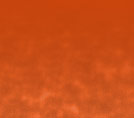CYCLE, FLARES and COSMIC RADIATION at
LESIA*
*Laboratoire d'Etudes Spatiales et d'Instrumentation
en Astrophysique
| CERCLe is part of the SNO 3SOLEIL | 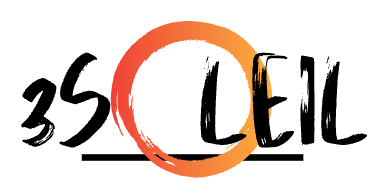 |
*** 11/2025 ***
Highest GLE since 2006 occured on Nov. 11th at 10:10UT. French neutron
monitors records show an increase of about 30%. More informations on this event
on NMDB website
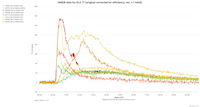
*** 03/2025 ***
NMDB Meeting 2025: Cosmic Ray studies with Neutron Detectors, 19-21 march 2025: conference website
*** 03/2024 ***
Polar Institute annual report with a focus on our cosmic rays observation program RAYCO (in french) 
*** 12/2023 ***
A schematic diagram to explain atmospheric and geomagnetic vertical cutoffs related to cosmic rays striking Earth. See also the vertical rigidities iso-contours map on NMDB/Nest website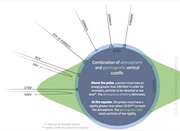
*** 28/10/2021 ***
La première éruption solaire à particules
relativistes du nouveau cycle d'activité [French]
*** 28/10/2021 ***
SiGLERT detects GLE73 [English]
*** 11/2020 ***
SiGLERT website now displays both radiation maps and its GLE alert tool
*** 06/2019 ***
For the 2nd year, CERCLe shared a stand with IRSN at the 53rd Paris Air Show

*** 23/05/2019 ***
CERCLe members participated in the radioprotection forum held at Air France headquarters
*** 14/11/2018 ***
ACFJ, the consortium formed by Australia, Canada, France and Japan was designated by ICAO (International Civil Aviation Organisation) as one of the tree global centers for space weather advisories to airlines. SiGLE_RT model will contribute to these advisories.
*** 01/08/2018 ***
CERCLE, together with IRSN, created a database for radiation measurements aboard aircraft: DBAF. More informations to come
*** 01/06/2018 ***
The SiGLE model for radiation dose assessment during solar storms has evolved to a real time tool: 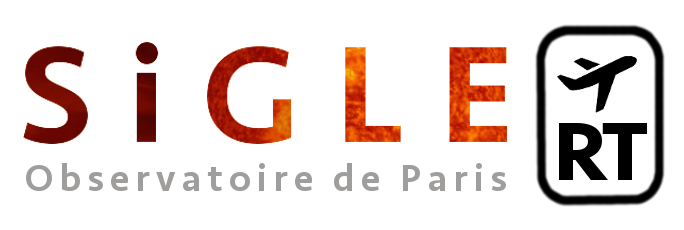
*** 01/01/2017 ***
IPEV annual activity report: focus on our cosmic rays observation program RAYCO (in french) 
*** 01/09/2016 ***
Update of the solar cycle page, to take into account the new RI12 computation method of SILSO
*** 27/10/2014 ***
A series of strong X-ray burst on 2014 October 24-26 without solar energetic particle events at the Earth[English]
*** 09/04/2014 ***
New page on CERCLe dedicated to Composite Radio Spectra of SEP events
see the table [here]
*** 17/05/2012 ***
First GLE (Ground Level Event) of solar cycle 24
more informations: [English]
*** 07/03/2012 ***
Solar flares of 7th March 2012 and
associated solar energetic particles (SEPs)
more informations: [English]
*** 23/01/2012 ***
L'éruption du siècle (encore une...) / Flare of the century (one more...)
more informations: [francais][english]
*** 15/02/2011: First big flare of solar cycle 24 ***
more informations
*** 04/2010: Kerguelen NM counts available in real time ***
see NEST tool
*** 12/2009: NMDB tutorial about cosmic rays ***
available in several languages
*** 03/2009: First release of the NMDB Event Search Tool, "NEST" ***

*** Highest values ever recorded by ***
French neutron monitors in 2009


*** First sunspot of solar cycle 24 ***
Read the story at SIDC
*** French monitors involved in the
European ***
project for a Neutron Monitor DataBase

*** Many
auroras seen above Terre-Adelie in August ***
Dumont-D'Urville station, August 7th 2007 =>
***
December 13th 2006 GLE ***
Plots and ASCII available
***
January 20th 2005 GLE ***
Strongest radiation doses received
aboard
aircraft since 1989
From this web site you can access services and data:
- Last hourly values from Kerguelen and Terre-Adelie stations are
available via a daily updated graphic representation. See NMDB/Nest tool for more specific request.
- The forecasts page gives you access to long term prediction of RI12, F10.7, modulation parameters, etc.
-
From the solar flares page you can retrieve the QBSA flare lists in ascii (1972 to 1989).
You will also find pages dedicated to the radiation doses received aboard aircrafts, to the solar cycle precursors, a list of meetings (mainly in the fields of Space Weather and Solar Physics). The publication page give you access to some papers of the CERCLe members. All questions/comments concerning the web site are welcomed. Please contact the
webmaster.
Our partners:

- CNES (Centre
National d'Etudes Spatiales) for Space Weather activities.
- CLS (Collecte
Localisation Satellites) for orbit prediction.
- IPEV (Institut
Paul-Emile-Victor) for the Sievert System
(neutron monitors operations).
- DGAC (Direction Generale de
L'Aviation Civile) for Sievert System.
- IRSN (Institut de
Radioprotection et de Surete Nucleaire) for Sievert System.







